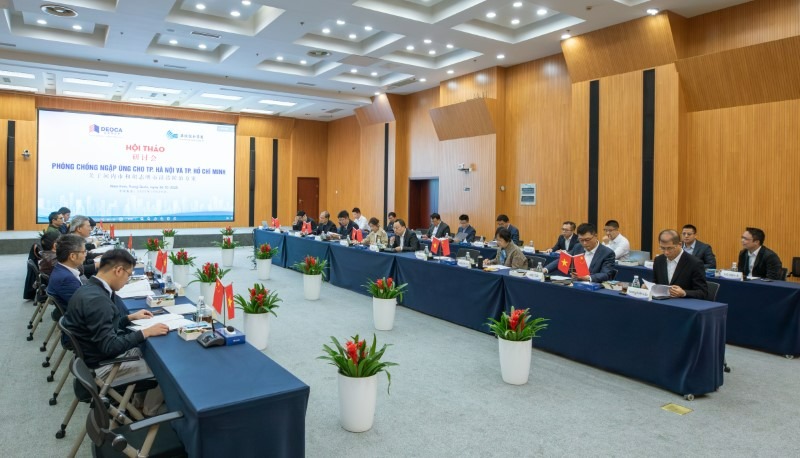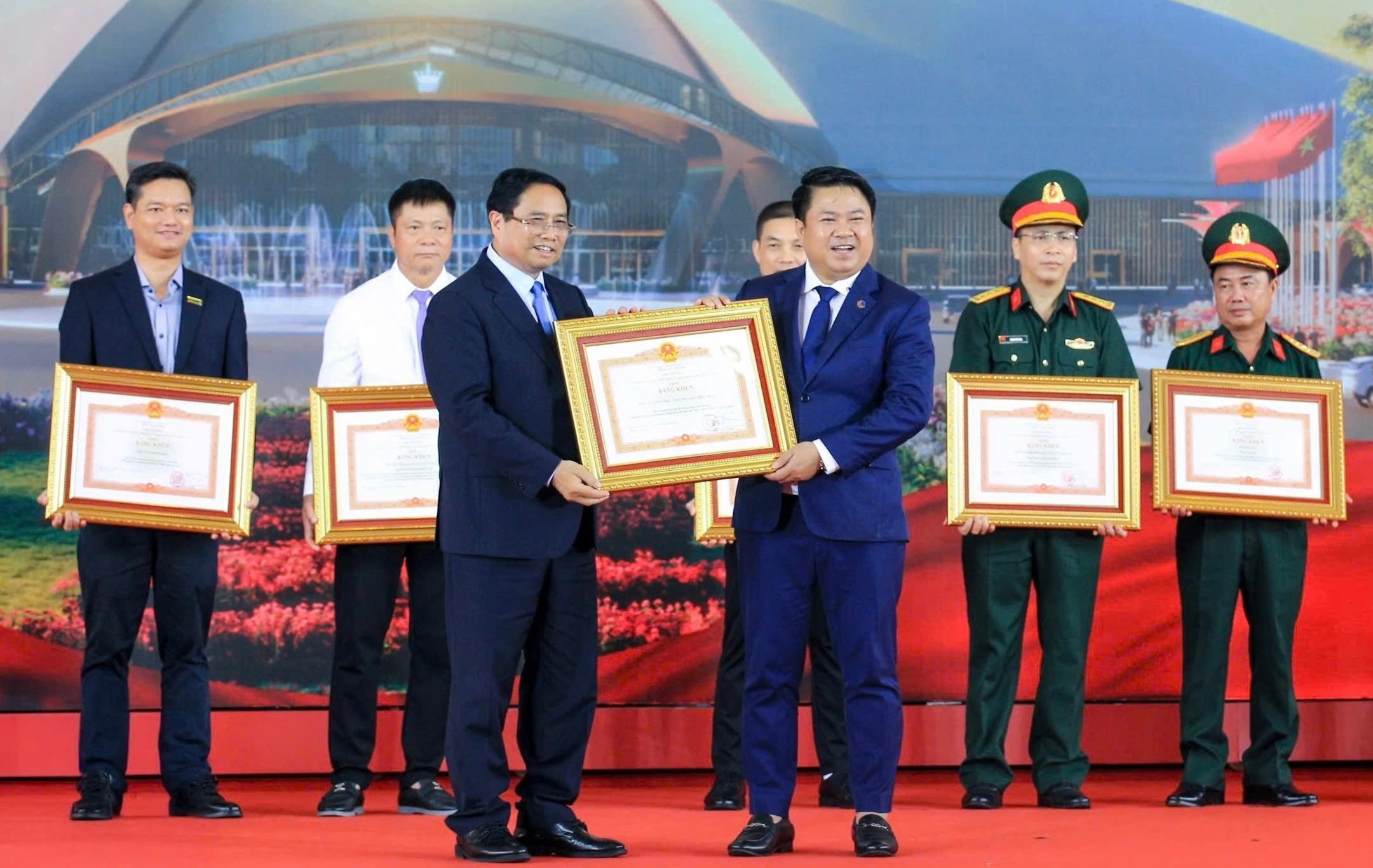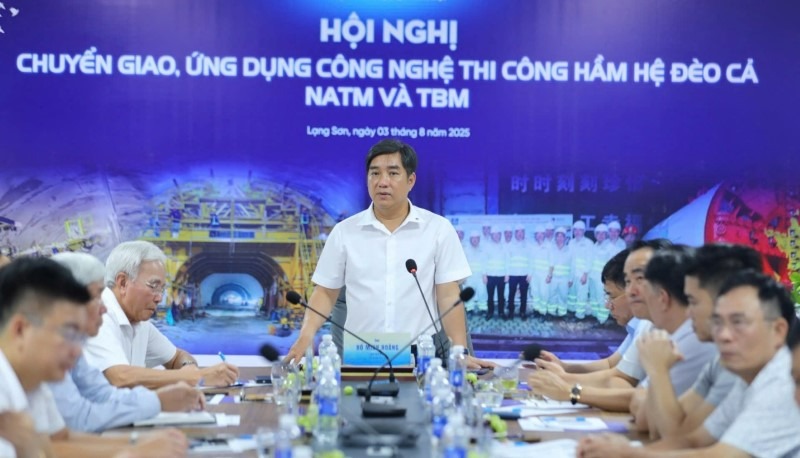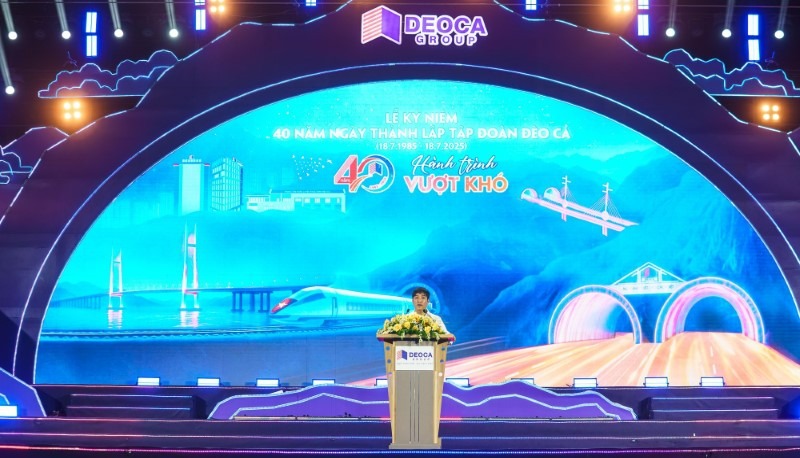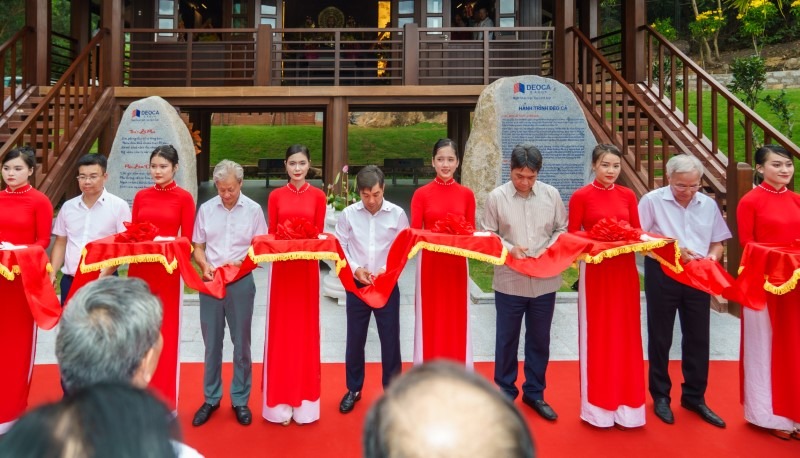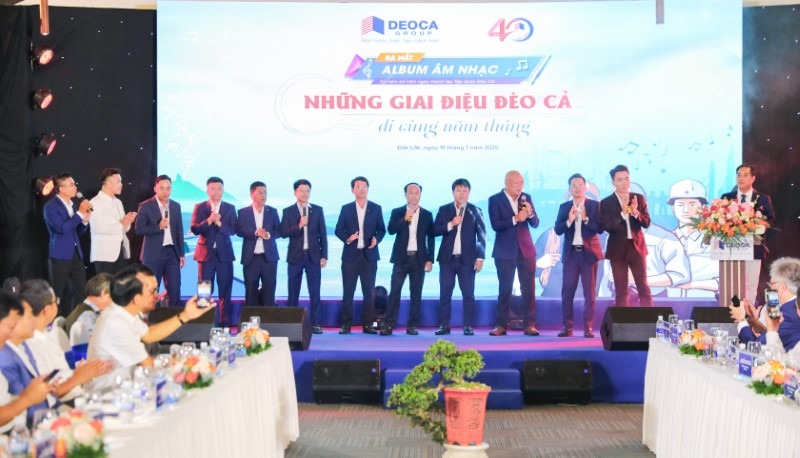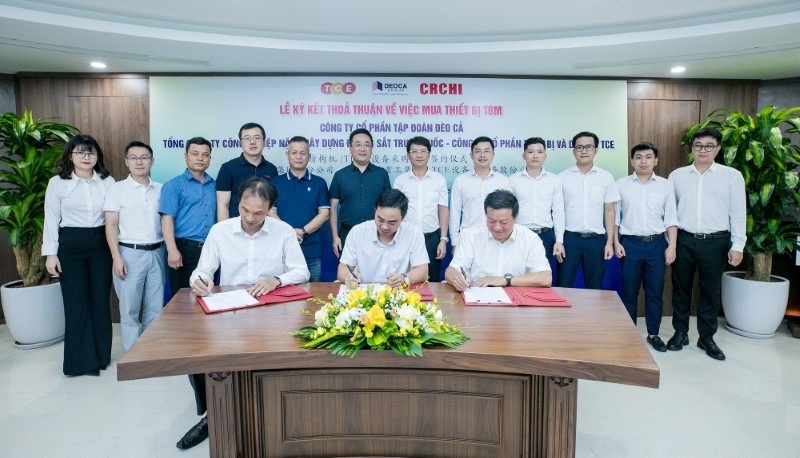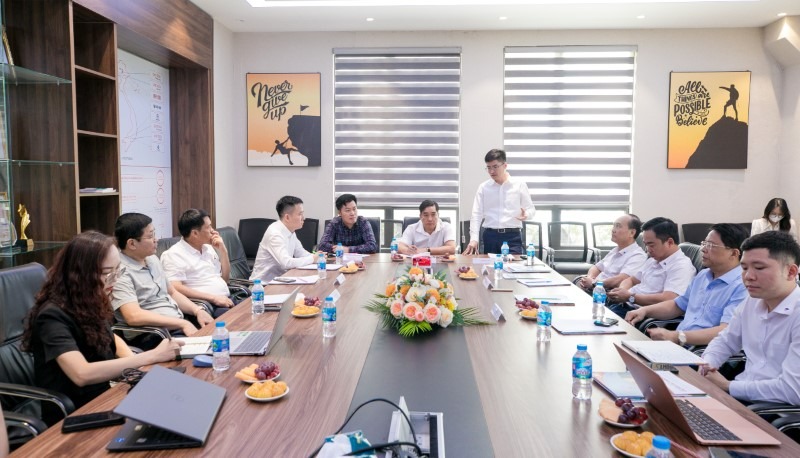On March 17, 2022, in Binh Dinh province, Deo Ca Group (DCG) held a meeting of the Board of Management (BOM), presided by Mr. Ho Minh Hoang - Chairman of the BOM. The meeting was attended by members of the Advisory Council, the BOM, the Board of Directors (BOD), and specialized departments in the Group.
Tasks of the BOM and the BOD were assigned in the meeting. The BOD reported production and business results in 2021, planned to implement functions in 2022, and proposed implementation methods.
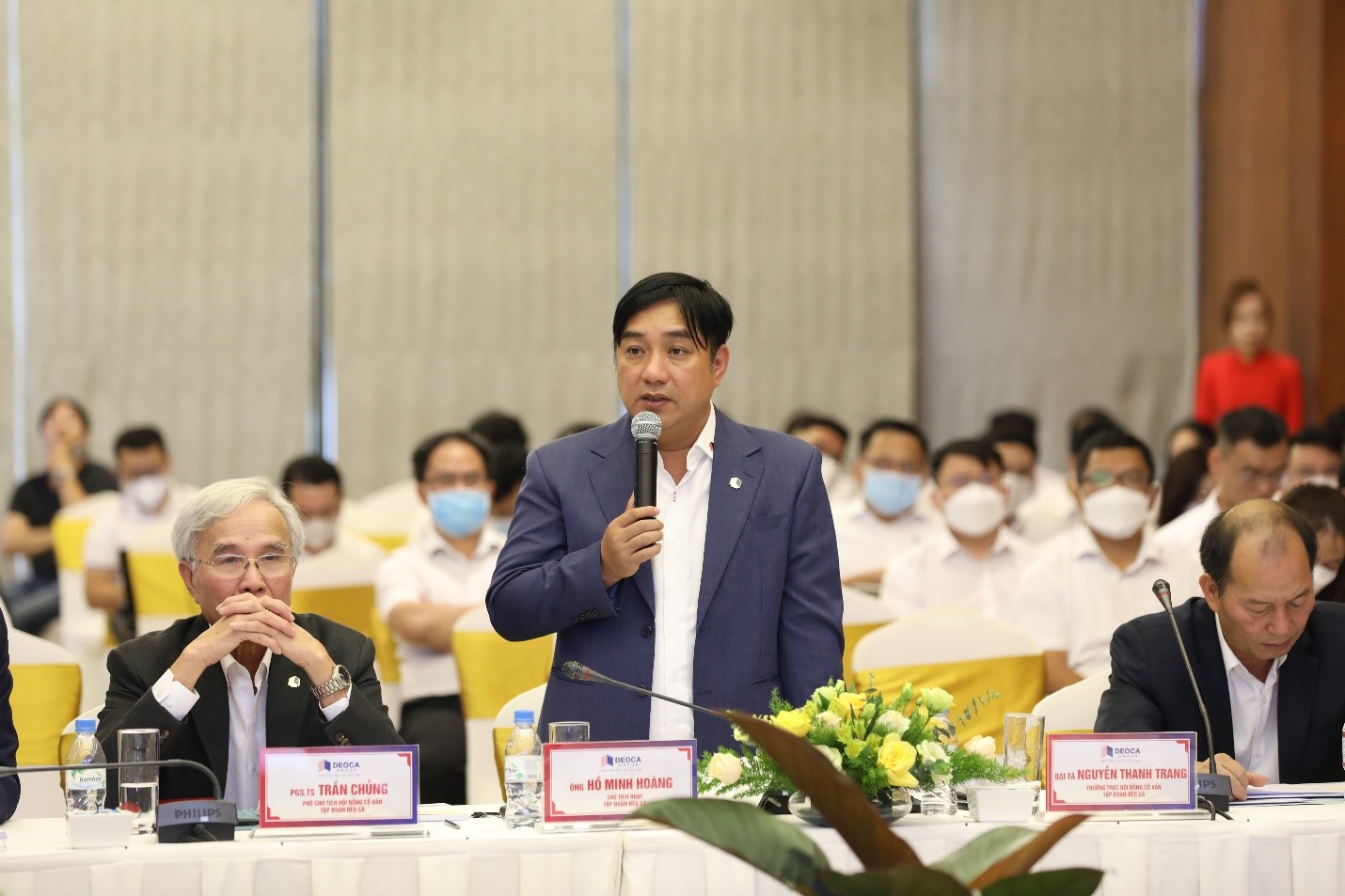
The Chairman of the BOM Ho Minh Hoang chaired the meeting.
The members attending the meeting listened to the BOM's Office report on the plan to assign tasks to the BOM and the BOD members. Accordingly, the BOM consists of 8 members, with Mr. Ho Minh Hoang as Chairman and Mr. Phan Van Thang as Standing Vice Chairman. Other members of the BOM are assigned to be in charge of different fields such as finance, investment, bidding, construction and installation, operation management, etc. The BOD of the Group and its subsidiaries are assigned specific tasks with the motto "Deo Ca One" - DCG directs consistently.
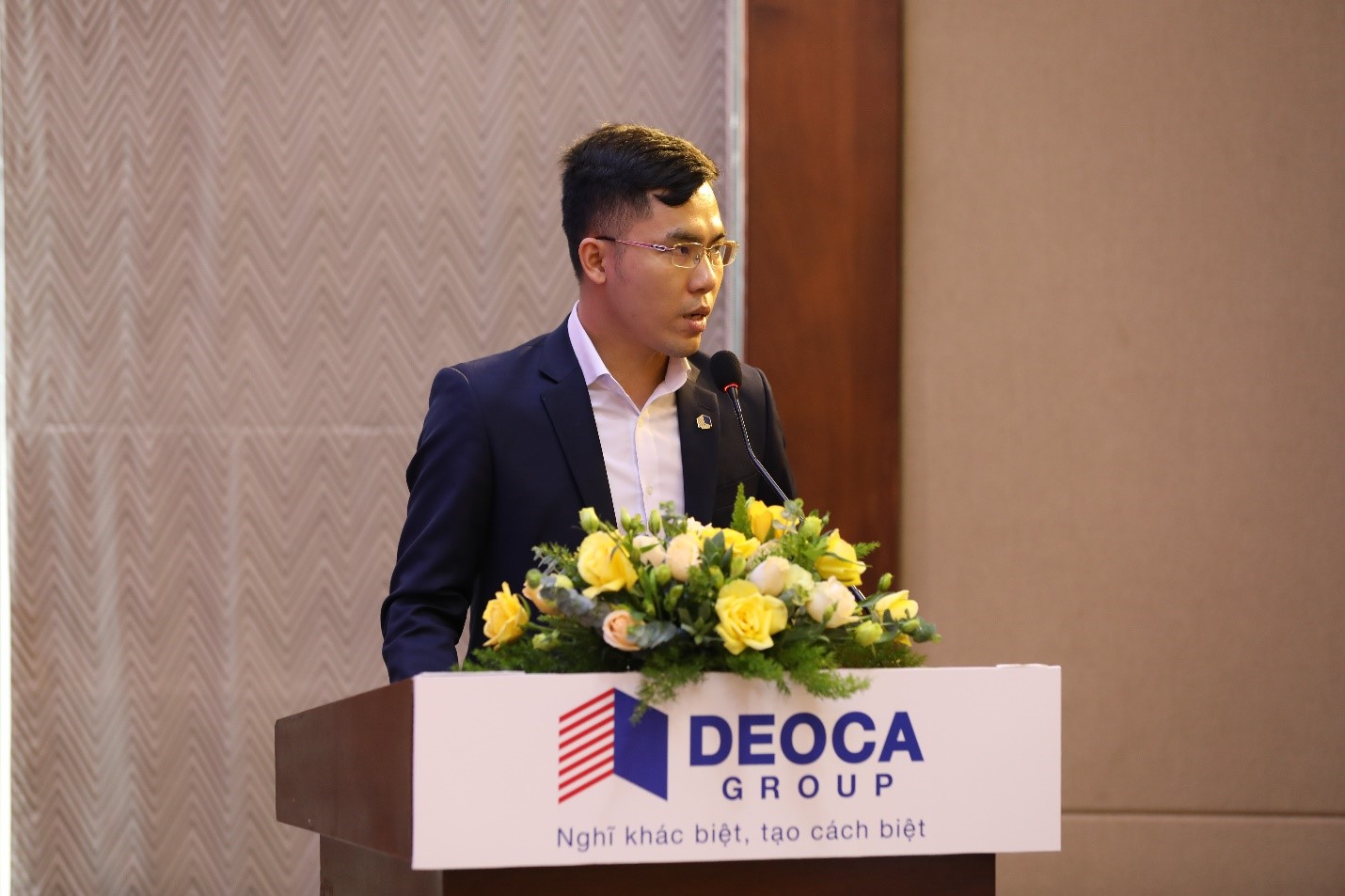
General Director Nguyen Van Hai reported
On behalf of the BOD, General Director Nguyen Van Hai reported the production and business results in 2021 and the work implementation plan in 2022, the work plan for 2022 - 2025. From 2022 through 2025, DCG continues to focus on core activities of investment in transport infrastructure; general contractor for construction and installation; management, operation, and maintenance of traffic works; investment in real estate, industry, and services... associated with traffic projects.
General Director Ngo Truong Nam, General Director Ho Dinh Chung, and General Director Nguyen Van Hai respectively reported methods to implement the government model "Govern people - Govern tasks - Govern profits."
The report received many detailed comments from the Chairman of the BOM and members of the Advisory Council. Mr. Ho Minh Hoang assessed that it is essential to look back at the results of operations to recognize them. However, more importantly, it is necessary to identify the tasks that have not been achieved with the view that "99% completion is still not completion". From there, it is needed to find out the causes and learn from experience to avoid encountering similar inadequacies when implementing projects in the future.
TT


